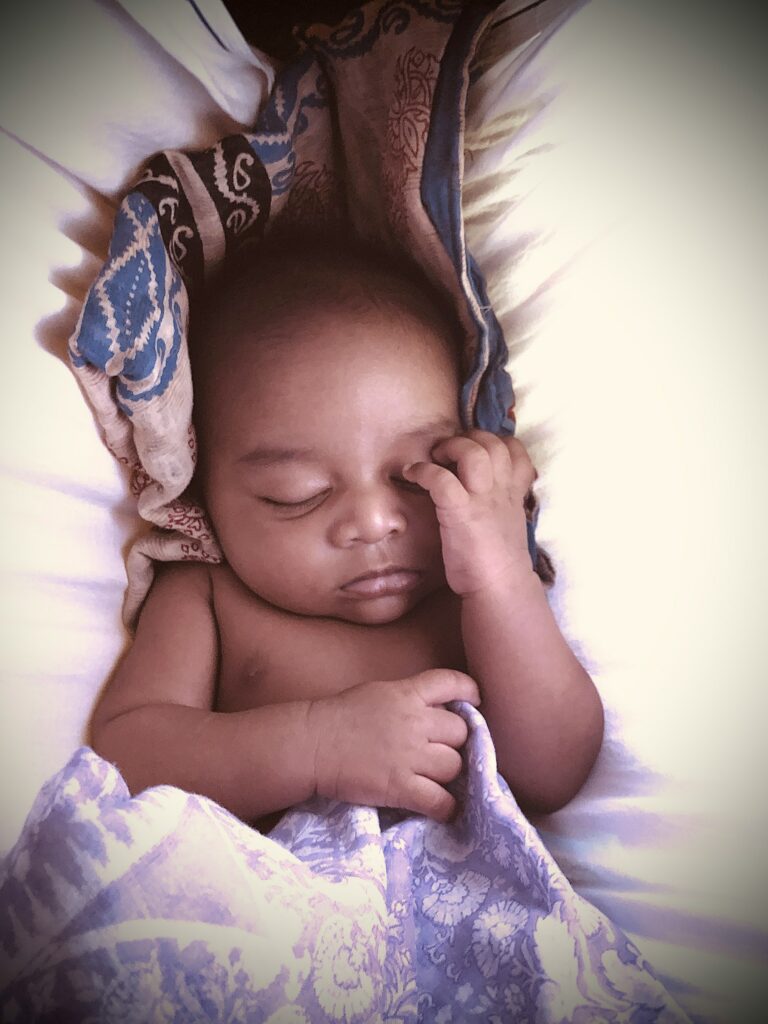Picture this: it’s the middle of the night, your newborn stirs in their sleep, arms suddenly splaying outward as if alarmed, followed by a brief cry. Unsettling? Absolutely. Uncommon? Not at all. Many parents wrestle with questions—Is this normal? Should I be worried? The truth is, the Moro reflex is one of the first neurologic signals that your baby’s developing brain and nervous system are off to a healthy start. Still, encountering this dramatic reflex can spark concern, confusion, and countless late-night searches. Let’s unravel what the Moro reflex means for your little one, when to expect it, and how to respond thoughtfully. From its underlying science to practical daily tips, discover how this reflex shapes early weeks—and when to take action if something seems unusual.
What is the Moro Reflex?
Every newborn arrives with a repertory of mysterious, automatic responses. Among the most striking is the Moro reflex—sometimes called the startle reflex—which emerges during late pregnancy (around 28-32 weeks gestation) and becomes fully active from birth. Unlike a simple flinch, the Moro reflex unfolds in a precise, three-part sequence:
- Sudden abduction: both arms extend sharply outward, fingers opening wide, sometimes legs straighten too.
- Rapid adduction: arms sweep back toward the body, almost as if to clutch for security.
- Usually, a loud cry follows, echoing the sensory shock.
What triggers this spectacle? A loud sound. A quick shift in head position. An unexpected sensation of falling. What’s fascinating—this is not merely random movement but an involuntary protective motor response. In evolutionary terms, it’s thought to safeguard the baby by prompting a rapid grip or embrace, a vestige from our primate ancestry. Medically, it provides insight into the maturation of the infant’s central nervous system.
The Role of the Moro Reflex in Development
Why does this reflex matter? It’s much more than an odd party trick of early infancy. The Moro reflex supports:
- Neurological health check: Its presence confirms a functioning brainstem and healthy neural circuits—paediatricians routinely assess it for this reason.
- Stimulus for motor development: Each startle event sparks coordinated use of muscles, laying the groundwork for voluntary movement—setting the stage for rolling, crawling, and those milestone first steps.
- Sensory processing calibration: By responding to a spectrum of external stimuli, the baby’s sensory network learns and adapts, training the brain’s “alarm system.”
Any parent witnessing this dramatic outburst can attest, it’s impossible to miss. Yet, those movements—precisely timed, symmetrical, robust—are silent markers of ongoing sensorimotor development.
Developmental Timeline: When does the Moro Reflex Appear and Fade?
Timelines matter. Expect to see the Moro reflex from the day your baby is born—it’s present in most healthy, full-term infants and should be symmetrical (the same on both sides). Its intensity peaks during the initial 2-3 months. Then, as cortical maturation and voluntary control increase, those flailing arms and startled cries start to fade. Generally, the Moro reflex wanes anywhere from 3 to 6 months. By six months, it should vanish as the brain assumes greater command over movement.
Premature infants may show a weaker or absent reflex at first (their nervous systems are still gearing up); adjustments in timing are based on corrected or gestational age rather than exact days since birth. If the Moro reflex persists distinctly beyond six months or is missing on one side, clinical attention is essential—underlying nerve injury, muscle weakness, or broader neurological disorders may be present.
Triggers: What Sets Off the Moro Reflex?
What everyday moments prompt these grand, involuntary movements? Common stimuli include:
- Sudden noise: door slamming, barking dog, dropped utensil—anything loud enough to break the silence.
- Quick movement or change in position: lifting the baby too abruptly, especially during diaper changes.
- Sensation of falling: even a fleeting dip of the head, such as when gently lowering onto a bed.
Sometimes, this can disrupt sleep or jar your baby awake mid-feed. These episodes are natural, though, and as development proceeds, frequency and intensity diminish. Consider: does your baby startle more during daytime chaos, or in the hush of night? Every tiny response gives clues about their maturing sensory system.
Clinical Observations and Parental Tips
Healthcare professionals watch the Moro reflex closely during check-ups. Here’s how it’s typically tested: the baby is gently held, a brief tilt of the head prompts the expected movement—timing, strength, and symmetry all under the spotlight. At home, it’s often first spotted during a nappy change or when an unexpected sound ricochets around the nursery.
Feeling helpless? Here are some parent-tested strategies to tame the startle:
- Swaddling with soft, breathable fabric holds arms close, offering comfort while minimising abrupt surprises (always make sure baby’s hips are free).
- Always support the infant’s head, especially during transfers or after sleep.
- Reduce exposure to sharp noises or sudden environmental changes—dim lights, gentle voices, and unhurried motions soothe the nervous system.
Remember, a certain amount of startle response is a sign that everything is progressing as it should.
The Moro Reflex: Significance and Disorders
For paediatricians, the Moro reflex is extremely informative. When the reflex appears as expected—strong, symmetrical, and vanishing by the right age—it acts as a reassuring sign. If not, consider these scenarios:
- Absent or diminished reflex: might signal global muscular weakness, perinatal hypoxia (low oxygen during birth), or an underlying neurological condition.
- Unilateral response: If one side is unresponsive, think possible brachial plexus injury or even a fractured clavicle.
- Exaggerated or persistent reflex: Sudden, intense startles beyond six months sometimes point towards rare genetic conditions like hyperekplexia, unresolved neonatal injury, or motor pathway immaturity.
Certain patterns, such as persistent asymmetry, should always prompt medical evaluation—a simple set of reflexes can sometimes reveal deeper insight into a baby’s overall neurological integrity.
Distinguishing the Moro Reflex from Other Primitive Reflexes
Wondering how the Moro reflex stacks up alongside other newborn movements? It is just one member of a much larger ensemble:
- Rooting and sucking reflexes: Essential for early feeding, these trigger a turn toward and latch onto the nipple or teat.
- Palmar grasp: That powerful, unyielding infant grip in response to a finger in the palm.
- Stepping reflex: Hold your newborn upright and watch as tiny feet perform treadmill-like movements.
- Tonic neck reflex: Known colloquially as the “fencer’s pose”—the baby’s arm extends when the head is turned to the corresponding side.
- Babinski reflex: Gentle stroking on the sole leads to toes fanning outward—a neurological soft sign also routinely checked.
Every primitive reflex has a timeline, and tracking these alongside developmental milestones paints a richer, more complete picture.
Causes and Consequences of Abnormal Moro Reflex Patterns
What lies beneath atypical Moro reflexes? Causes range widely:
- Prematurity: Immature nervous or muscular system means reflexes may be weak or delayed.
- Birth trauma: Brachial plexus injuries, fractured bones, nerve damage—all can disrupt normal motor signalling.
- Oxygen deprivation: Episodes of hypoxia or asphyxia at birth sometimes result in lingering reflex abnormalities.
- Prenatal toxin exposure: Certain medications, substances, or even malnutrition may subtly alter expected responses.
- Neurogenetic disorders: Autism spectrum conditions, spastic cerebral palsy, or hereditary syndromes such as hyperekplexia can all play a role.
When the Moro reflex lingers or behaves unusually, be vigilant for accompanying motor delays, atypical behaviour, or difficulties in sensory processing. Sometimes, chronic retention links directly to kernicterus—a neurological condition related to severe newborn jaundice that affects the central nervous system. Timely recognition and intervention, including specialist therapy and adapted environments, can alter a child’s trajectory for the better.
Integrating the Moro Reflex: Parental Support and Practical Steps
How to gently shepherd your baby from involuntary to intentional movement?
- Support the head and neck consistently
- Swaddle thoughtfully in early weeks, balancing security with mobility
- Minimise loud noises and abrupt happenings, especially at sleep times or during feeding
- Daily tummy time: Place your cheerful explorer on their tummy under supervision—watch strength, coordination, and curiosity blossom
- Rich sensory experiences: Offer a palette of sounds, textures, and gentle visuals to nurture adaptable, age-appropriate sensory integration
If patterns seem off—reflexes unchanging, asymmetric, missing, or exaggerated—a thoughtful, science-backed evaluation helps pave the way for targeted support. Parental instincts matter, and clear, open communication with paediatric professionals is always encouraged.
Moro Reflex and Broader Development
The gentle fade-out of the Moro reflex signals so much more than just calmed startle responses. Proper integration is foundational—by six months, your child’s newfound ability to control movements, adapt to sensory input, and concentrate is a bedrock for later skills. Without integration, one may see clumsiness, difficulty regulating emotions, anxious behaviour, or persistent hypersensitivity to noise. These can impact school, play, and relationships, which makes early observation and, when relevant, intervention all the more meaningful.
Key Takeaways
- The Moro reflex is a brief, dramatic but healthy sign of early brain and motor system function—present from late pregnancy, strong during the first few months, and naturally fades with maturity.
- Normal patterns reassure; deviations (such as absence, persistence after six months, or marked asymmetry) suggest it’s time to consult a paediatrician for a thorough assessment.
- Gentle swaddling, steady routines, and environmental tuning can ease both distress and disturbance.
- Never hesitate to reach out when questions arise: development is a journey, and many trustworthy professionals are ready to accompany parents step by step.
- For tailored advice, milestone checklists, and health questionnaires, explore the application Heloa—a supportive resource for personalising care and empowering your parental journey.
Questions Parents Ask
Can the Moro reflex affect my baby’s sleep?
Yes, the Moro reflex often surfaces during lighter sleep cycles, causing sudden limb movements or brief awakenings. This can be distressing to witness, but it’s a normal neurological stage. By 4 to 6 months, as the nervous system matures, reflex-driven disturbances usually decrease. Gentle swaddling (with freedom for hips), a quiet space, and predictable sleep routines can provide solace for both baby and parent.
Does every baby have the Moro reflex?
Most newborns display a clear Moro reflex from birth—a reassuring, hardwired part of infancy. Premature babies or those with complex birth histories might reveal a less intense or delayed reflex, or sometimes only on one side. Any obvious differences—absence, exaggeration, or one-sided response—should be discussed during regular child health visits.
Is it possible for older children or adults to have the Moro reflex?
The Moro reflex is unique to infants and reliably vanishes around the 4 to 6-month mark. If persistent startle patterns crop up well after infancy, or in adults, share these observations with a healthcare provider. Typically, older children or adults who react to sudden loud noises are displaying a standard startle reflex—distinct from the infantile Moro reflex, which is a specific developmental phase in early life.
Further reading:









